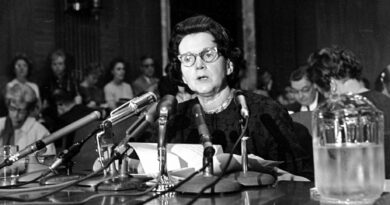Music’s Influence on Popular Culture & Society

The movement of popular culture was started on the principle that, the everyday experiences of common people have compelling insights into the society. The idea behind popular culture is that, each section in life should contain facts that can be verified by a group of readers (Storey, 2009).
Popular culture has been given a definition from common culture to mass culture and even folk culture. In most cases, the culture is associated with commercial cultures that include television, radio, and movies, adverts, toys and games photography among others. Humanities and social sciences of 1950s and before, did not acknowledge popular culture but today the culture is widely acknowledged by this faculty and analyzed as an important material economically and politically. For instance, the US has widely used the culture as one of its most income generating export commodity making it a thing of international market ranging from movies of Levis Jeans to Sylvester Stallone.
The world has developed so much through popular culture. During this present electronic age, every country is struggling worldwide to access internet, mass media, print media, and electronic media among others. The globalization of exchange has also intensified popular culture through new information technologies and communication. Some of the positive effects that come with popular culture include; people globally are much connected to one another than before, money and information is flowing rapidly than ever before, goods can be purchased and sold online through internet, international communication and transportation is easier and accessible nowadays as compared to past eras among others (Storey, 2009).
As for this case, I will specifically discuss how music as one of the popular cultures is very important in society today. Music forms a crucial aspect of every day life and it comes in different forms, ranging from tunes, background music, television shows, songs on radios, arrangements performed in school orchestra and even concerts performed in different occasions.
Music has greatly impacted culture globally. Music is a mean of communicating. For example, when patriotic songs are sung, they pass a message of patriotism, when mourning songs are sung; they pass a message of condolences, when sacred songs are sung, they are meant to worship and so on. Music is also used to advertise and persuade. Music reflects what is happening worldwide, it is an acting mirror between people and lyrics. All ages from children to the old find music as away of sharing their opinions and emotions.
The Academic Benefits of Music Education
Different researches have shown that, music is very beneficial to education. There is a strong link between music and academic achievement. Some of these researches indicate that, children who are learning to play different musical instruments while in school score high marks than their colleagues who do not play any musical instrument. The research further indicated that, the more these students engaged themselves in these instrumental programs, their academic performance kept on improving from time to time (Pratt, 1994).
For instance, a ten year study that included over 25000 students indicated that, students who engage themselves in music making programs perform well in standardized tests than those who do not engage themselves in these music making programs. The same thing was featuring in admission of students to colleges, those students in music programs scored 70 points more on the verbal and 50 points more on the SATs section of math as compared to their colleagues who were not participating in music programs. Further, these music students performed well in tests like reading and languages.
Another study carried out in the University of British Columbia showed that, participation in music greatly benefits the students involved in higher academic achievement. The instructions given in music courses are directly or indirectly connected to other core subjects and thus enabling these students to perform better in those other subjects (Schuller, 1968).
Mathematical Skills
Research has shown that, instructions that are offered in musical courses helps to develop the capability of spatial temporal reasoning that is very crucial in acquiring some mathematical skills. For instance, music instructions in rhythm emphasize on proportion, fraction, ratio and patterns, which are directly related to mathematics. Students, who engage themselves in orchestra or band during their middle and high school years, portray better skills of math proficiency by grade thirteen and the results were more frequent in family with low income. Those students who were participating in instrumental music were likely to perform much better at higher levels of math than their peers who were not participating in music (Mahar, 1998).
A research of Meta analysis of twenty students that included 801 children of ages four to thirteen years indicated that, children equipped with music instructions perform highly, than those on spatial temporal tasks. Those who are introduced to music very early in life are likely to enjoy the benefits much later in life, till old age. Further, the researcher indicated that, at least two years are needed to properly instill these music instructions to these children for better results.
Another study found that, those students who were participating in orchestra performed better in math and intelligence tests. The piano students were also recognized to be cognitive and their spatial abilities kept on improving from time to time. The study further clarified that, those who were under piano instructions and were receiving instructions for half an hour weekly scored 20% higher than the test cell and 30% higher on questions of proportional math. The conclusion that was drawn from this research is that, instructions offered on piano lessons condition the brain, spatial; awareness and the necessity of thinking a head increase latent neuronal patterns (Mahar, 1998).
Reading and Language Skills
Reading skills are believed to improve due to exposure to music. We write, hear, and read words which are used and perceived in specific contexts. The contexts could be spatial networks where the words could be related to each other or other expressions. Instrumental music assists young children to get reading skills. Students with some years of experience have been found to perform better in examination than those without the experience. Moreover, those with the experience have been proven to be performing better in reading test scores.
Music promotes reading and cognitive development. A research was conducted that included children aged six to nine years with learning difficulties. The results showed that, music programs had a lot of impact on student’s receptive vocabulary. This is because, music training has been confirmed to increase verbal memory and it is said that, the more training one acquires, the better the verbal memory he gets.
The Social Benefits of Music
Studies have shown that, people who involve themselves in music get positive personal, social and motivational effects. So generally, music is believed to be the overall life on an individual and more especially the young people (Mahar, 1998).
Researches have shown that, people in the arts are more co-operative with their elders, peers, teachers if they are students and they have been confirmed to be self confident and can express their ideas in a better way. The conclusion reached showed that, music reduces anti-social behavior. For instance, students who involve themselves in school band or orchestra have the lowest levels of alcohol taking, illicit drugs and other harmful substances. This positive behavior is generated and persists over a long period of time.
The musical performances that include performance of two or many as a group, enhances critical thinking and problem solving. Those who play musical instruments are required to attain some social and emotional skills important for a contributing member that includes discipline, collaboration, persistence, motivation and patience. Those people who perform in front of others are associated with high self esteem and this enables them not to fear and they associate themselves with success always (Booth, 1983).
Art creates environment that support and promote acceptance of criticism and allows people to take risks safely. For example, researches have shown that, those students at risk of dropping out of school are encouraged to enroll in arts and it has been proven as a reason for them to stay. These students have also been reported to be spending less time in watching television, doing a lot of community service work and feeling less boredom while in school. Students who participated in orchestra were found to be more competitive in class and they had a positive attitude about school and less friction in classrooms. Skills got from music discipline give students the ability to analyze, communicate, solve their problems and work co-operatively which are vital requirements of any career and at work place (Booth, 1983).
Conclusion
Participation in music provides an opportunity for literacy preparation in children. When these children are singing, listening or playing the musical instruments, their trainees direct them on how to listen and hear in different ways that sharpens their cultural discrimination. The kind of playing of instruments and movements made teaches the children on the sequential learning that is very important in reading and comprehension.
Music has been found by researches to use both sides of the brain and this is very important for the overall development of a child. This is because; it influences the development of a child emotionally, academically, spiritually and even physically.
Physically, music is a sport. Learning to sing and keep the tune and rhythm requires coordination. The air required for blowing instruments like flutes and saxophone enhances a healthy body. Emotionally, music is an art. Human beings are emotional and all of us and more especially young children require an outlet of art. Music is one of the child’s means of expressing himself. Music is for life because not all of us can play football and more especially at old ages of 80s and 90s, but we can sing at that age, play piano and other instruments like drums. If music is acquired at a young age by a child, it will last throughout life unlike other sports like soccer. Music is a potent instrument that cannot be compared with any other for life (Sylvan, 2002).
The private sector is encouraged to come in and fill the vacuum left to the public educational system. Music organizations empower and provide equal access to music and its benefits by encouraging the young generation in areas where music has little access. Help can be provided in form of funding, developing music programs which can foster its necessity, raise the self esteem of the people, improve the academic achievement and teach people critical social skills. If this is done, the young talents in children will be ignited and they will start their lives with a lot of hope that will enable them reach their highest potentials. This should be a goal of each parent to his or her child.
Art and music have been considered to be basic human needs and human kind and art are complimentary. It is believed that one cannot function without the other and that is how serious it is. Music is used in life to encourage, enjoy, mourn, make merry and so on, hence music is unavoidable in life (Sylvan, 2002).
References
Booth, M. W. (1983). American Popular Music: A Reference Guide. Greenwood. Greenwood Press.
Mahar, W. J. (1998). Behind the Burnt Cork Mask: Early Blackface Minstrelsy and Antebellum American Popular Culture. Illinois University of Illinois Press
Schuller, G. (1968). Early Jazz: Its Roots and Musical Development. Oxford. Oxford University Press.
Storey, J. (2009). Cultural theory and popular culture: An introduction (5th ed.).
Harlow, England: Pearson Education Canada.
Sylvan, R. (2002). Traces of the spirit: The religious dimension of popular music. New York: New York University Press.
Pratt, R. (1994). Rhythm and Resistance: The Political Uses of American Popular Music. London. Smithsonian Books.




